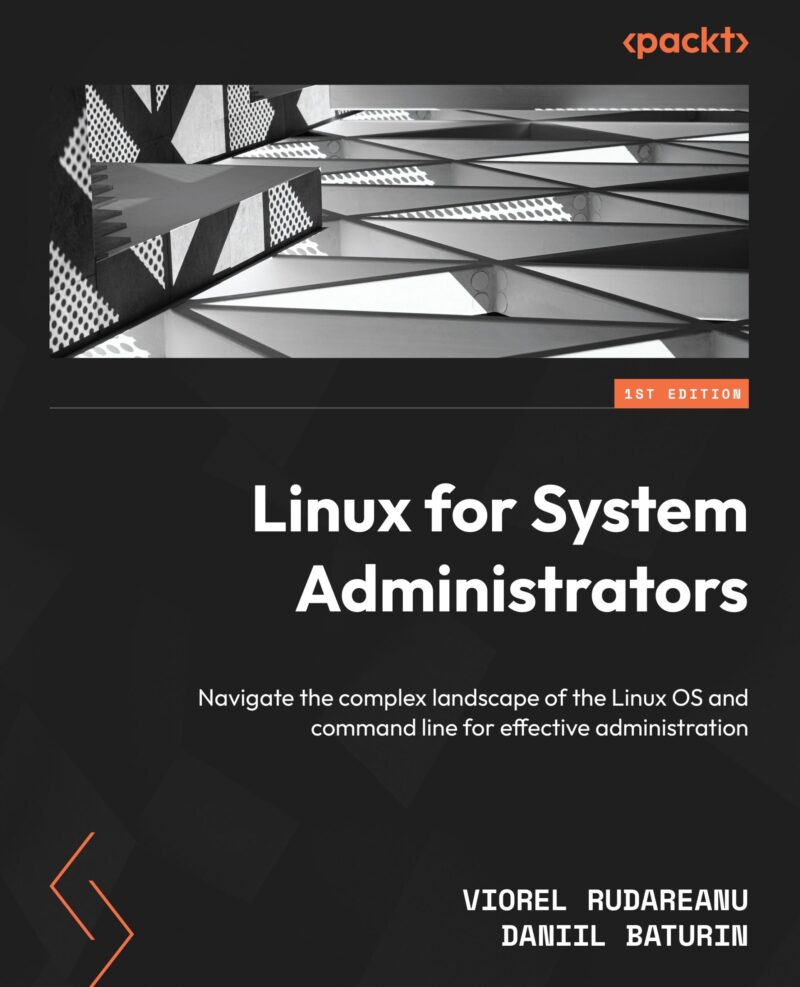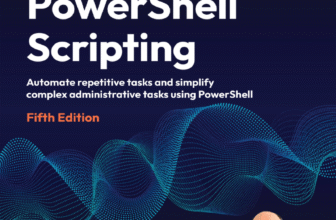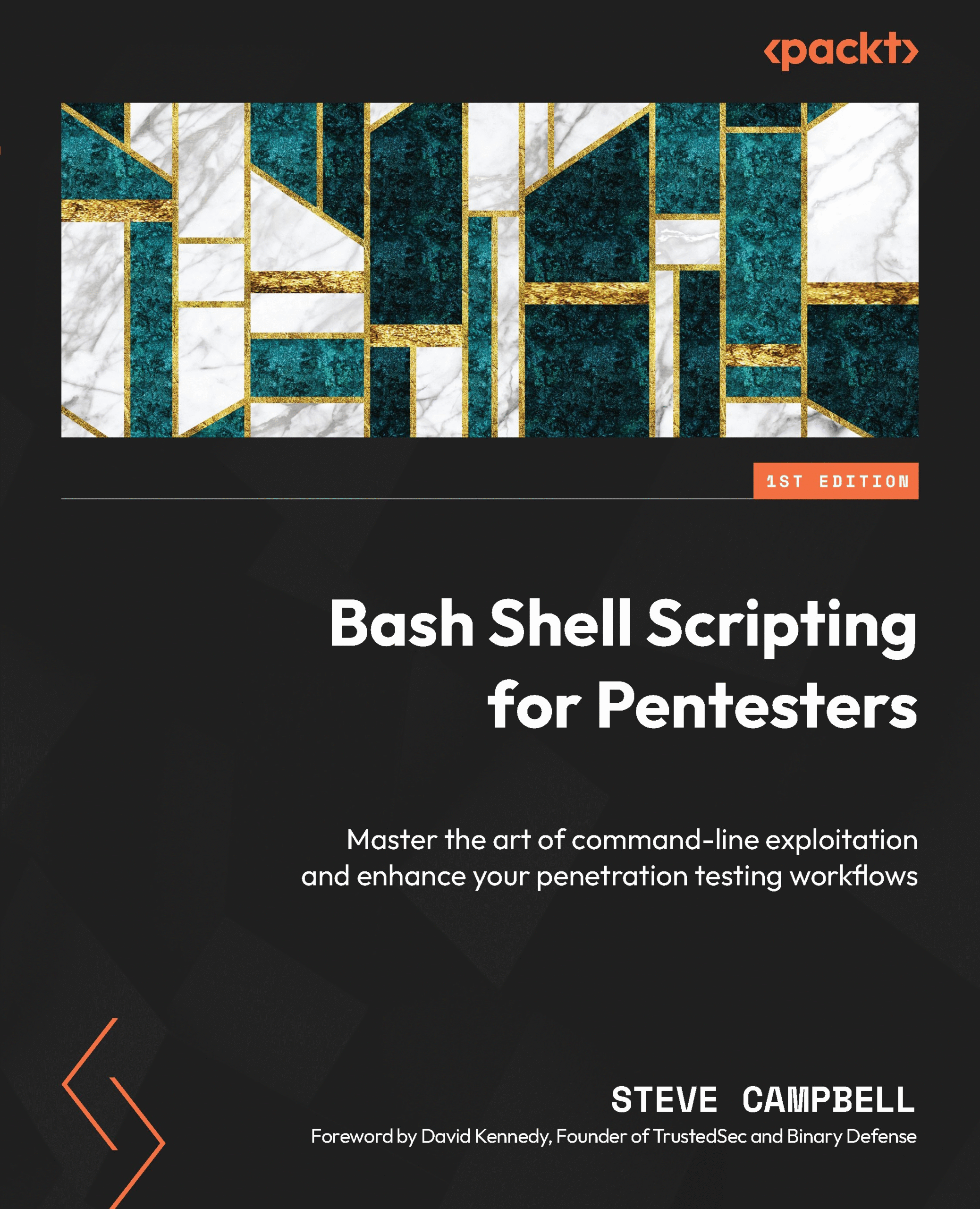Linux for System Administrators: Navigate the complex landscape — Book Review & Guide
Introduction
If you’re looking to build strong, practical skills in Linux System Administration right now, Linux for System Administrators: Navigate the complex landscape of the Linux OS and command line for effective administration (Rudareanu & Baturin, 2023) is one of the most up-to-date resources you can get.
This book is for you if:
- You’re entering an IT role (helpdesk, junior sysadmin, support engineer) and need to understand Linux fundamentals.
- You already manage Linux servers but want to level up in areas like automation, high availability, or security best practices.
- You’re designing or managing Linux-based infrastructure or cloud services and need hands-on guidance.
What you’ll gain from reading this:
- Confident mastery of Linux command line operations, basic & filesystem tools.
- Skills to configure, diagnose, and troubleshoot networks in Linux environments.
- Understanding of storage management, logical volumes, and mounting strategies.
- Techniques for securing Linux systems, applying best practices, reducing attack surfaces.
- Capability to automate tasks, infrastructure, and deployment using Chef (code, cookbooks, nodes).
About the Book
Originally published by Packt Publishing in September 2023, Linux for System Administrators is a 1st edition guide offering around 294 pages of content. Sources: Packt, Google Books
It teaches Linux administration from the ground up: starting with basics like what Linux is, how filesystems work, shell usage, and progressing to more advanced topics such as high availability, centralized authentication, automation, and security. The organization is logical: Part 1 covers foundational material, Part 2 handles system configuration & modification, Part 3 puts Linux into broader infrastructure contexts.
Why it matters today:
- With more infrastructure moving to cloud, containers, and hybrid environments, understanding Linux deeply (not just surface commands) is essential.
- Automation tools like Chef remain relevant in many enterprises, and this book includes hands-on exposure.
- Security threats keep evolving; having strong best practices, plus tools & techniques, gives you resilience.
- For those starting late with Linux skills, this book acts as a bridge from entry level to intermediate / advanced system administration.
Book Details
| Field | Details |
|---|---|
| Title | Linux for System Administrators: Navigate the complex landscape of the Linux OS and command line for effective administration |
| Author(s) | Viorel Rudareanu & Daniil Baturin |
| Publisher | Packt Publishing Ltd |
| Year | 2023 |
| Edition | 1st Edition |
| Pages | 294 |
| ISBN-10 / ISBN-13 | 1803245085 / 9781803247946 |
| Formats | Paperback and eBook (PDF / Kindle / EPUB) |
| File Size | Not specified |
| Language | English |
| Official URL | Packt product page |
About the Author(s)
Viorel Rudareanu
Viorel Rudareanu is an experienced Linux systems practitioner with over 15 years of work in Linux infrastructure and operations. According to public sources, he has implemented and managed Linux-based infrastructures, leveraging the platform’s robustness and flexibility to optimize performance. He brings clarity to architectural and operational topics, combining low-level detail with hands-on examples.
Daniil Baturin
Daniil Baturin was introduced to Linux early (circa 2002) and has worked professionally since about 2007 in system administration and software engineering. He is a maintainer of VyOS, a Linux-based network OS for enterprise & service provider routers, giving him direct experience in networking and infrastructure. His contributions to open source and real-world environments enhance the book’s credibility.
Table of Contents
Part 1: Linux Basics – This section builds your foundation by walking you through the Linux ecosystem, its structure, and the essential commands. It ensures you develop confidence with the operating system before moving on to advanced administration.
- Chapter 1: Getting to Know Linux — Learn the anatomy of a Linux system, the philosophy of open-source licensing, different Linux distributions, and how Linux powers modern IT infrastructure.
- Chapter 2: The Shell and Its Commands — Master the command-line interface (CLI). Start with basic commands (navigation, file operations) and progress to intermediate shell utilities, pipes, and redirections.
- Chapter 3: The Linux Filesystem — Understand how Linux organizes files and directories, how filesystems are mounted, and the difference between hard and symbolic links. Includes scalability and performance considerations.
- Chapter 4: Processes and Process Control — Explore how processes are created, monitored, and terminated. Covers signals, exit codes, and practical tools to manage system processes effectively.
- Chapter 5: Hardware Discovery — Techniques to inspect CPU, memory, USB, PCI devices, and storage. Learn how to troubleshoot hardware compatibility issues using Linux commands.
Part 2: Configuring and Modifying Linux Systems – Once you’re comfortable with the basics, this part dives into system configuration and administration, giving you the tools to manage real-world environments.
- Chapter 6: Basic System Settings — Configure critical system files (
hosts,resolv.conf,sysctl.conf), understand network scripts, and tweak system parameters for stability and performance. - Chapter 7: User and Group Management — Hands-on guidance for creating and managing accounts, setting permissions, switching users, and securing access through
sudoers. Essential for multi-user environments. - Chapter 8: Software Installation and Package Repositories — Explore different package managers (
apt,yum,dnf), handle dependencies, manage repositories, and perform system-wide upgrades. - Chapter 9: Network Configuration and Debugging — Get practical with IP configuration, routing tables, and Linux networking tools. Includes troubleshooting network failures and using NetworkManager effectively.
- Chapter 10: Storage Management — Manage partitions, format and mount storage, and set up Logical Volume Management (LVM) for scalable storage solutions.
Part 3: Linux as a Part of a Larger System – This section elevates your administration skills by integrating Linux into enterprise-scale systems with security, automation, and high availability.
- Chapter 11: Logging Configuration and Remote Logging — Learn how logs are generated, stored, and forwarded. Configure centralized logging using
rsyslog, manage log rotation, and analyze system events. - Chapter 12: Centralized Authentication — Secure your systems with centralized identity management. Covers PAM, SSSD, and integration with Active Directory via Samba.
- Chapter 13: High Availability — Discover redundancy and load balancing strategies. Configure Keepalived for failover and use HAProxy for application-layer load distribution.
- Chapter 14: Automation with Chef — Automate infrastructure deployment and configuration. Step-by-step introduction to Chef servers, nodes, workstations, and cookbook development.
- Chapter 15: Security Guidelines and Best Practices — Harden Linux systems against threats. Topics include patch management, privilege separation, firewall rules, and industry best practices for system security.
Key Highlights / Summary
- Mastering the Linux Shell & Filesystem is Foundational
The book emphasizes that deep comfort with the shell, directory structures, mounting/unmounting, hard vs symbolic links, and filesystem types (FUSE, etc.) is critical.
Exercise: On a test VM, create multiple filesystems (ext4, xfs), mount them via/etc/fstab, simulate link creation, and practice failure modes like unmount errors or broken links. - Networking Troubleshooting Goes Beyond Ping
The authors cover network stack, neighbor tables, route tables, and distribution-specific network tools (NetworkManager etc.). Understanding these layers helps in identifying issues like incorrect routing, ARP/NDP problems, DNS misconfiguration.
Lab: Build two Linux VMs; set up misconfigured route tables, name resolution issues, simulate packet loss; debug withip,traceroute,tcpdump. - Centralized Authentication & Scaling Users
Local user/group management alone is insufficient for medium/large networks. Centralizing via PAM, SSSD, or integrating with AD/Samba is covered in depth. This is vital for managing access at scale.
Application: Set up a test AD or LDAP server (or use SSSD with FreeIPA) and configure one or more Linux clients to use centralized login. Test user creation, password policies, sudo rights. - Automation with Chef Streamlines Repetitive Tasks
Using Chef for infrastructure automation (cookbooks, nodes, roles) means you can codify configuration management, reduce drift, and manage consistency. Also, it improves safety (you test recipes, roll out changes systematically).
Exercise: Install Chef workstation, write a simple cookbook to configure a web server (install package, ensure service running, configure firewall rules), then apply on multiple nodes. Practice updating cookbooks. - Security Best Practices Are Non-Negotiable
The authors lay out common threats, attack types, and patterns to reduce risks: privilege separation, credential protection, limiting attack surfaces, reducing unneeded services. Those practices protect systems before issues arise.
Implementation: On a Linux server you manage, run a security audit: identify open ports, services, check user privilege levels, review sudoers, ensure patches are applied. Then implement at least three hardening steps (e.g., disable root login over SSH; enforce password policies; use firewalls).
Expert Review
Strengths
- Very logical structure: starts from basics and builds up to enterprise-level topics.
- Practical, hands-on examples & labs, not just theory.
- Covers often-missed but essential topics: centralized auth, high availability.
- Up-to-date (2023) with current Linux tools & distribution practices.
- Good balance between Linux internals and sysadmin tasks.
Weaknesses / Limitations
- Not extremely deep in some advanced topics (e.g., SELinux or AppArmor hardening) — more of an overview than mastery.
- Chef is powerful, but some readers might prefer newer or alternative automation tools (Ansible / Puppet / Terraform) — those aren’t the primary focus.
- Some chapters assume a working knowledge of Linux basics; absolute beginners may need supplementary tutorials.
- File size / format coverage for eBooks might vary by retailer, which can affect usability offline.
Star Ratings
| Aspect | Rating | Justification |
|---|---|---|
| Content Depth | 4/5 | Covers a wide spectrum; some advanced depth but not exhaustive in every area. |
| Practicality | 5/5 | Lots of labs, real-world exercises; very applicable. |
| Readability | 4/5 | Clear writing; occasional chapters have steep learning curves. |
| Value-for-money | 5/5 | Given its breadth and usability, strong value for those wanting real sysadmin skills. |
Who Will Struggle with This Book & Why
- Those expecting a cookbook of every possible Linux distro. The book focuses on common distributions; edge cases may require other sources.
- People who have zero exposure to command line or operating systems may find early chapters dense. Supplemental learning may be needed.
- If your work is heavily container-oriented, Kubernetes, or cloud orchestration (Terraform, etc.), those topics are not the core here — you’ll need complementary books.
- Readers wanting ultra-deep security hardening (e.g., SELinux policy writing, kernel module security) may find the coverage introductory rather than fully advanced.
Who Should Read This Book?
| Persona | Why It Benefits Them | Recommended Sections / Chapters to Focus On |
|---|---|---|
| Student / Starter in IT | Provides solid foundations; builds necessary skills from scratch. | Part 1 (Chapters 1-5), then Chapter 6 & 7. |
| Junior System Administrator | Bridges gap between basic usage and full responsibility of server management. | Chapters 8-10 + Part 3 early chapters. |
| Cloud / DevOps Engineer | Useful for underlying OS knowledge, automation, high availability. | Chapter 14, Chapter 13, plus security chapter. |
| Security Analyst / Hardener | Best practices and threat models help reduce vulnerabilities. | Chapter 15, plus networking & authentication chapters. |
| Helpdesk / Support Staff | Helps with diagnostics, user & group management, handling permissions. | Chapters 2,6,7,9. |
| Infrastructure / Network Engineer | Networking, central authentication, HA topics are highly relevant. | Chapters 9,12,13. |
| Educator / Trainer | Clear structure, practical labs make teaching Linux easier. | All parts; especially foundational + labs. |
Related Resources / Books
- The Ultimate Kali Linux Book — Good companion for those who want to learn Linux OS. [Visit Post]
- Practical Threat Detection Engineering — If you want to learn about threat detection. [Visit Post]
Frequently Asked Questions
Q: What prerequisites do I need before reading this book?
A: You should have basic familiarity with computers, files and folders. Prior exposure to Linux command line helps. No heavy prerequisites are required, but absolute beginners may need to supplement with basic tutorials. Linux for system administrators is covered from early chapters.
Q: Is this book good for learning CLI commands and shell scripting?
A: Yes — early chapters focus on The Shell and Its Commands, filesystem operations, links, process control. While shell scripting isn’t the main focus, many examples and commands help build strong scripting habits.
Q: Does it cover automation tools?
A: Yes, specifically Chef is explored in Chapter 14. It shows Chef server, workstations, cookbook development, nodes, roles, interactions.
Q: How up-to-date is the book with current Linux distributions and tools?
A: Published in September 2023, it includes modern tools and practices. Some syntax/paths might differ slightly depending on distro, but the core principles are current.
Q: Will this teach high availability and enterprise-scale features?
A: Yes — there is a chapter devoted to High Availability (Chapter 13) covering load balancing, redundancy, Keepalived, application layer balancing. Good for enterprise contexts.
Q: Can I use it to prepare for certifications or job interviews?
A: Absolutely. Many sysadmin / devops / cloud roles expect knowledge in networking, storage, authentication, CLI, automation, which this book provides. Use its labs & exercises to practice and build portfolio.
Q: Are there lab files, code samples, or a repository I can clone?
A: It is not clearly stated in sources that full lab code is packaged, but many chapters include examples. If there is a companion repository, check the Packt site or publisher’s “code assets” section.
Q: Is this book suitable for those focusing on containers, Kubernetes, or serverless?
A: Some foundational knowledge here is essential (storage, networking, security), but container orchestration isn’t a main focus. For container-heavy workflows you’d need supplementary resources.
Download
Download — Linux for System Administrators (PDF)
Format: PDF (eBook)
File size: varies by edition
Short disclaimer:
This download is presented for educational purposes only. Always support the author and publisher by purchasing the official edition if you find the material useful. Unauthorized distribution or piracy harms authors and the community.
Download the Code / Lab Assets
The book does not provide official code examples or lab assets. However, all concepts and exercises can be practiced directly on your own Linux system or a virtual machine. Readers are encouraged to create their own practice environment using VirtualBox, VMware, or cloud instances (AWS, GCP, Azure) to follow along with the book’s examples.
Actionable Study Plan / Curriculum (8-Week)
- Week 1: Foundations: Understand what Linux is; shell & basic commands […]
- Week 2: Filesystem & processes; hardware discovery […]
- Week 3: System configuration basics & user/group management […]
- Week 4: Software installation, package management & networking […]
- Week 5: Storage management […]
- Week 6: Logging, remote logging, and centralized authentication […]
- Week 7: High availability & Automation with Chef […]
- Week 8: Security Best Practices; Review & Project […]
Conclusion
Linux for System Administrators by Viorel Rudareanu & Daniil Baturin offers a strong, practical roadmap for anyone serious about mastering Linux for System Administrators. It’s especially useful for newcomers moving into roles with real sysadmin responsibility, or for those wanting to fill gaps in their infrastructure, networking, automation, or security knowledge.
If you want to level up your skills, don’t just read — follow the labs, build your own test environments, automate, and secure. Use the study plan above, and you’ll likely see noticeable improvement in confidence and capability over 8 weeks.
If you found this helpful, let me know whether you want a printable cheatsheet, or lab workbook based on the book!
Was this article helpful?
Loved it? Share your thoughts with a quick comment, submit recommendations and suggestions or leave a star rating in comments!
Free Download









i love this book
Enjoy 😊